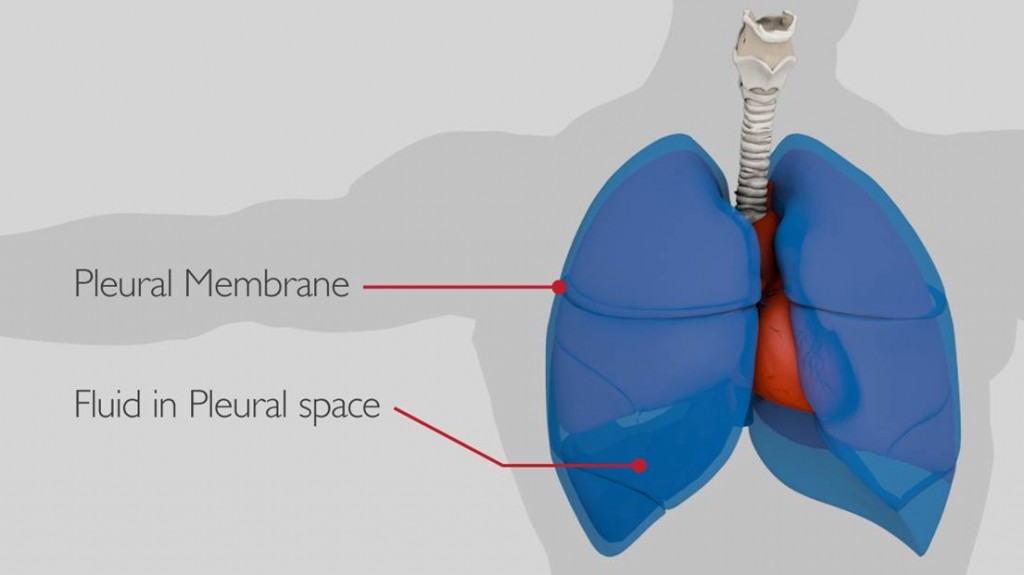What is fluid on the lung?
The term ‘fluid on the lung’ may be used to explain different things. These include:
Pleural effusion – fluid between the ribs and the lung, like a balloon pushed into a bucket of water
Thoracic surgeons help diagnose and treat people with a pleural effusion. A small amount of fluid can be normal soon after thoracic surgery.
Pulmonary oedema – fluid within the lung tissue, like a wet sponge
Pulmonary oedema is mostly caused by heart problems and will not usually be treated by thoracic surgeons.
What causes a pleural effusion?
There are a number of causes of a pleural effusion. Some minor, others more serious. These include:
Severe chest infections can cause infected fluid to build up around the lung, this is called an empyema. If the body fights off the infection scar tissue and fluid may remain. Tuberculosis (TB) can also cause a pleural effusion.
- Previous bleeding in the chest
For example, after breaking a rib. Blood in the chest is called a haemothorax.
Mesothelioma (meso) is a cancer that starts in the pleura. It is much more common in people who have worked with asbestos but can happen to people who haven’t. Lung cancer, or spread of cancer from elsewhere in the body, can cause a pleural effusion.
- Many other causes are possible including heart problems, inflammation (such as arthritis), liver problems and kidney disease. These causes can often be diagnosed without surgery.
What surgery is performed for a pleural effusion?
Surgery may be needed to diagnose the cause of a pleural effusion, this is called a pleural biopsy. During surgery the fluid is drained and treatments can be done to control the fluid. These may be inserting a thin tube (pleural catheter) or using talc powder (pleurodesis).
See Pleural biopsy



